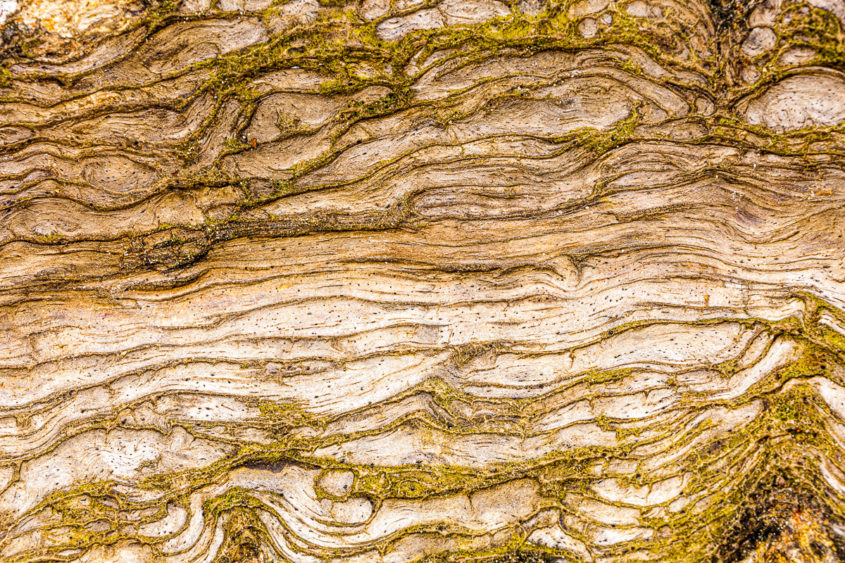
Visiting Spring Lake, a small lake located in the Ozark-St. Francis National Forest, I discovered this worn tree root. I was mesmerized by its various lines, patterns, and textures. To fill the frame while also giving myself some working distance, I used my 100-400mm lens set at 321mm. Because my camera was positioned only about two feet from the root, I placed an extension tube between the camera and lens to allow the lens to focus at such a short distance. To maintain maximum depth of field, I used an aperture of f/22. With everything firmly secured to my tripod, I tripped the shutter and captured the shot.
Generally, in a close-up shot such as this, the entire image must be sharp. When I reviewed the image on my computer, the composition was nice, and the picture was properly exposed. However, I had not accounted for the curvature of the root when considering if I had enough depth of field. This oversight caused the corners of the frame, especially the upper corners, to be soft, which essentially ruined the picture.
Depth of field is one of the most important considerations in photography. By altering the depth of field, you can ensure a landscape image is sharp from the foreground to the distant background. Or, you can focus the viewer’s attention on the subject by keeping only the subject sharp and letting the rest of the image be out of focus. Understanding depth of field and how it can be manipulated can vastly improve your photography.
What is depth of field? It is simply the distance between the nearest and farthest objects in a photograph that are reasonably sharp. Notice the term “reasonably sharp.” In any single image recorded by a camera, there is only one point that will be in focus. Any areas in front of or behind that focused point will be less sharp. However, when viewing the image at a normal distance with normal magnification, the areas that fall within the depth of field will appear to the eye to be sharp even though those areas are technically not in focus. It is that perceived area of focus, or depth of field, that we want to be able to control.
There are three variables photographers use to control depth of field: the aperture of the lens, the distance from the camera to the subject, and the lens focal length. Adjusting any combination of these factors changes the depth of field.
Here are some simple rules to remember when adjusting the depth of field in your next photograph:
- The smaller the aperture, the greater the depth of field. An aperture of f/22 will have more depth of field than an aperture of f/4.
- The greater the distance between the camera and the subject, the more depth of field. A camera 50 feet from the subject will have more depth of field than a camera that is 10 feet from the subject.
- The shorter the lens focal length, the more depth of field you will have. A 24mm lens provides greater depth of field than a 400mm lens.
In this case, I needed to consider all three factors. I should have closed down the aperture to the smallest I could, which was f/36. I needed to move the camera back a little bit further from the root to extend the depth of field. This would have meant the root would not have filled the frame the way I wanted it to, but I could have cropped it later in Photoshop. Finally, I needed to use a shorter focal length. As with moving the camera back, I would not have gotten the framing I wanted, but, again, that could have been addressed in Photoshop.